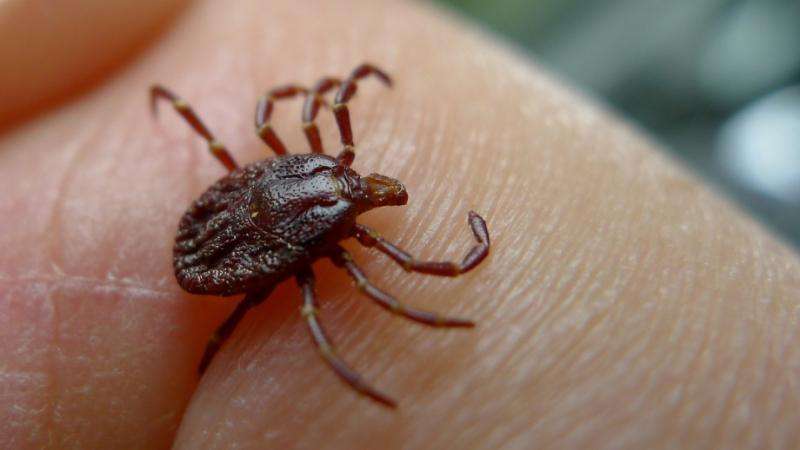A tick found in Australia. Credit: John Tann, Flickr
Lyme disease cannot be contracted in Australia and patients should not be treated with antibiotics for so-called Lyme-like diseases, new medical research has found.
Professor Peter Collignon AM from The Australian National University (ANU) and colleagues dispute well-publicised claims by some people and advocacy groups that the disease can be transmitted by ticks in Australia.
"Australia doesn't appear to have ticks capable of hosting the bacterial species that causes Lyme disease. Lyme disease diagnosed in Australia is acquired overseas," said Professor Collignon from the ANU Medical School and ACT Pathology.
Lyme disease commonly causes fever, chills and headaches, and can lead to complications in the central nervous system weeks or months after the onset of illness. The condition is the most commonly reported vector-borne illness in the United States, and is also reported in Asia and Europe.
Professor Collignon said some patients and advocacy groups claimed Lyme-like illnesses to label chronic, debilitating symptoms, often following a tick bite.
"This has led to patients believing that prolonged antibiotic therapy, including intravenous antibiotics, may cure their diseases - but such treatments can be dangerous," he said.
"Antibiotic resistance resulting from the unnecessary and prolonged use of broad spectrum antibiotics is a major problem. Treating patients with so-called Lyme-like disease with prolonged intravenous or oral antibiotic therapy is unjustifiable and unethical, and is likely to do much more harm than good."
A Senate inquiry launched last year raised questions about the epidemiology, diagnosis, treatment and investigation of Lyme disease and other chronic debilitating illnesses.
Professor Collignon said focusing on patients with chronic symptoms would lead to diagnostic research, which may help to identify new viruses and bacterial pathogens in ticks, animals and people in Australia.
The research is published in the Medical Journal of Australia.
More information: Does Lyme disease exist in Australia? DOI: 10.5694/mja16.00824
Journal information: Medical Journal of Australia
Provided by Australian National University





















